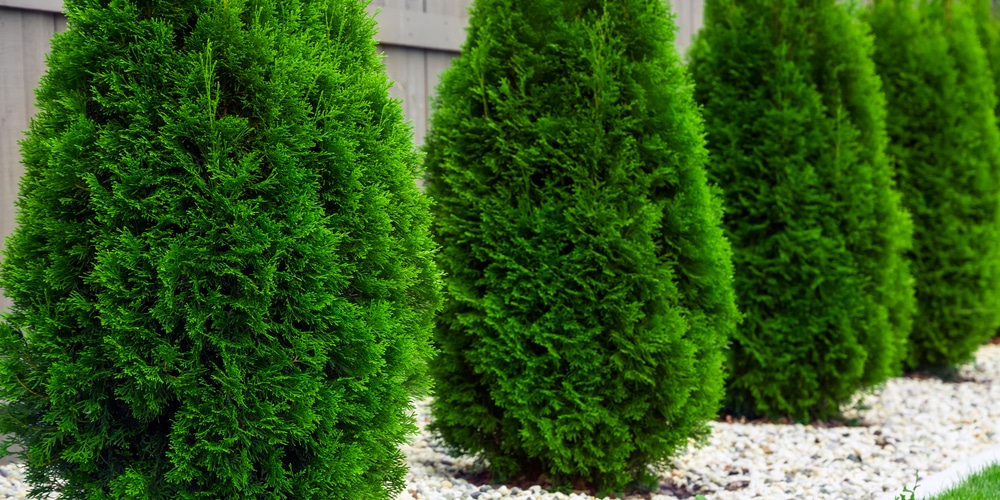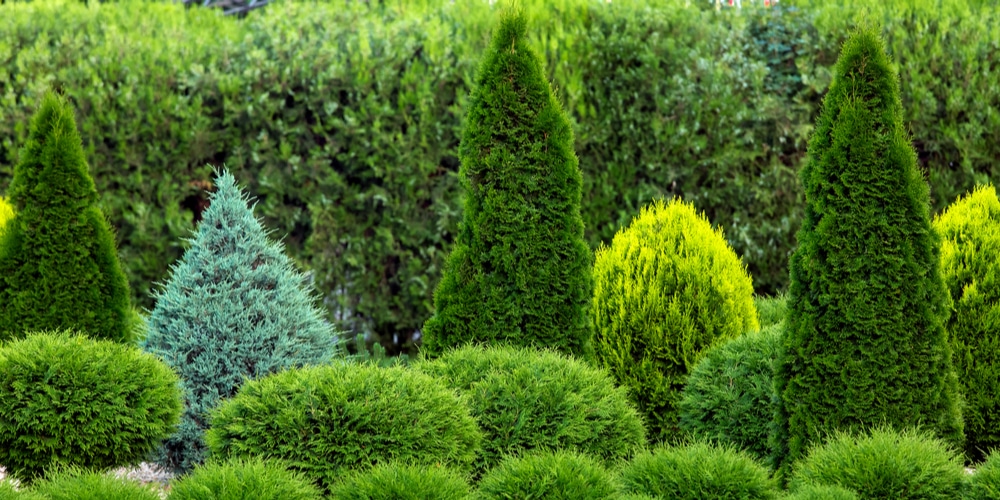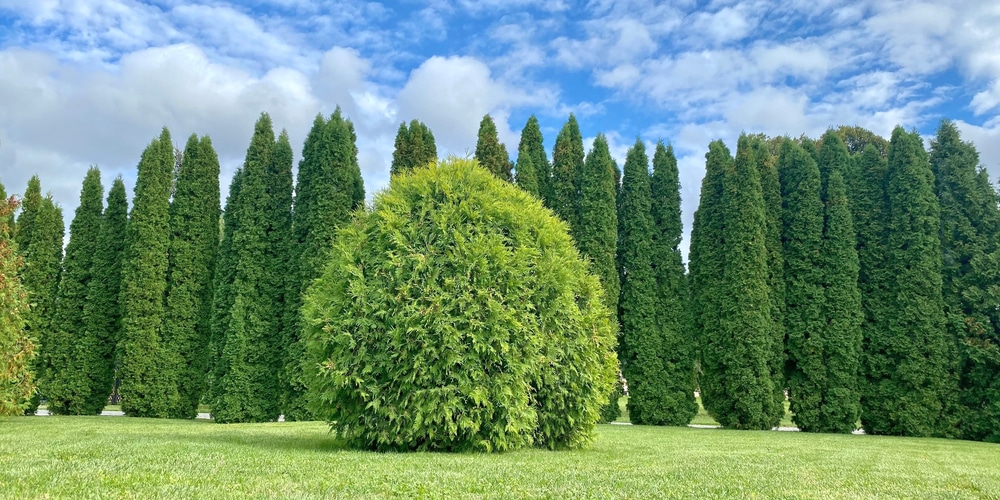When it comes to trees, few are as hardy and versatile as the Arborvitae. This coniferous evergreen is popular for a variety of reasons. It’s one of the few trees that can thrive in both cold and hot climates, making it a perfect choice for landscapes in both the north and south. The larger varieties are primarily used for privacy hedges, while the smaller varieties can be used as ornamental trees in the garden.
One of the most exciting things about Arborvitae is its root system. Arborvitae roots are strong and sturdy, anchoring the tree in place no matter what the weather brings. But how deep do these roots go? Some arborvitae varieties have shallow roots, which could be as deep as 8 inches, up to 24 inches.
Introduction to the Arborvitae Root System

You probably know Arborvitae plants for their dense, bushy foliage. Often, you see them in landscapes as tall, narrow hedges. They can also be used as small trees in a variety of landscapes, even as Christmas trees in some parts of the country. Arborvitae plants are actually quite tough and durable despite their elegant and refined look. This is due in part to their root system.
Arborvitae roots grow 8 to 24 inches deep, depending on their variety. Smaller varieties of Arborvitae, like the ‘Green Giant,’ have shallower roots that spread out just a few inches below the surface. Larger varieties, like the ‘Pyramidalis,’ have deeper roots that can grow up to 24 inches below ground.
Arborvitae roots are strong and fibrous, and they grow quickly to anchor the tree in place. In addition, the roots help to absorb moisture and nutrients from the soil. As a result, the arborvitae tree is able to withstand drought conditions and heavy winds.
Unlike other trees, its roots don’t go down – instead, it tends to spread out its roots wide and horizontally. This makes the tree well suited for growing in areas with poor drainage or compacted soil. As an adaptable tree, the Arborvitae is a good choice for those looking for a living privacy fence. Thanks to its shallow root system, the Arborvitae can be planted close to buildings and other structures without damaging foundations or sidewalks.
Are Arborvitae Roots Invasive?
Considering that these plants grow rapidly, many gardeners fear that the Arborvitae’s root system will become invasive and take over the garden. However, this is not usually the case. Arborvitae roots are relatively shallow, and they don’t grow very deep. This means that they won’t be able to penetrate into structures or damage underground pipes, and cables.
While it does spread far and wide, the Arborvitae’s root system is not as aggressive as other plants, like bamboo. It is recommended to space out Arborvitae plants at least 12 to 18 inches apart to prevent them from invading each other’s space. If you are worried about the roots spreading too far, you can always install a root barrier around the plant.
Common Challenges Gardeners Face With the Arborvitae’s Root System
Don’t be fooled by the Arborvitae’s tough exterior – this plant can be susceptible to a few common problems. One of the most common issues gardeners face is with the Arborvitae’s root system. While it’s true that maintenance is fairly easy, some of the problems that can occur are:
Root Rot
This is a condition that can be caused by over-watering or poor drainage. Arborvitae roots can become waterlogged and rot, which will kill the tree. Since this plant can thrive with minimal watering, remember not to overwater and only water an arborbvitae when the soil is dry to the touch.
Once the roots have started to rot, its roots will become soft and mushy, and you may start noticing that the tree will gradually lose its leaves. There are certain situations where the tree can still be saved. As long as the majority of the roots are healthy, you can cut back the dead branches and save the tree.
Vertical Root Syndrome
This is a condition that affects trees that have been planted in too tight of a space. The Arborvitae’s roots will start to grow vertically, instead of spreading out horizontally. This can cause the tree to become unstable and can lead to it toppling over in high winds. When planting Arborvitae, make sure to give them plenty of room to grow.
If you are seeing signs that your Arborvitae is suffering from vertical root syndrome, you can try to correct the problem by loosening the soil around the tree. You can also try to prune back some of the overly-vertical roots.
How Deep Are Arborvitae Roots: Final Thoughts
Arborvitae trees are relatively hardy and can survive in a variety of different settings. Spacing the trees and planting them next to each other may make a great hedge or fence.
However, take into consideration how deep the tree’s roots grow. Arborvitae trees have a fibrous root system that can spread out over a large area, so make sure to plant them in an area with plenty of room to grow. Space them out evenly, giving enough space for the roots to crawl and spread.
Consider the mature size of the tree before planting it to avoid having to re-plant in a few years. For the best results, plant arborvitae trees in well-drained soils that are rich in organic matter.
Related Article: What to Feed Arborvitae

